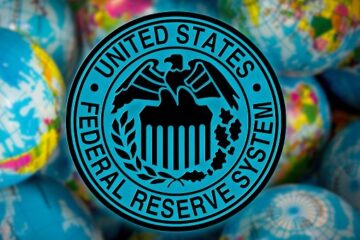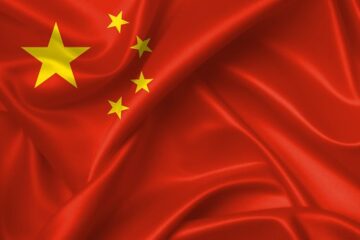The 19-year-old electric vehicle (EV) maker will focus on profitability and efficiency in 2022, like any company.
Elon Musk, the whimsical CEO of Tesla (TSLA) – Get Tesla Inc Report and SpaceX has gotten Wall Street and Main Street used to big promises about how he will change the world and especially shape the future of transportation.
Making people dream big is in a way the Musk method. When investors buy Tesla stock and propel the group into the select circle of companies with at least $1 trillion market capitalization, they are buying the promise that Tesla represents innovation in the automotive sector.
And how can we doubt it after Tesla has succeeded in less than two decades in pushing all car manufacturers to focus on the production of electric vehicles. From General Motors (GM) – Get General Motors Company Report, to Ford (F) – Get Ford Motor Company Report Volkswagen (VLKAF) , Stellantis (STLA) – Get Stellantis N.V. Report everyone wants to build and offer electrical vehicles (EVs). Even luxury groups like Bentley, Lamborghini, Ferrari (RACE) – Get Ferrari NV Report, and Maserati promise electric models.
So it was only natural that when Musk announced that he would be taking part in Tesla’s fourth-quarter earnings call on January 26, everyone was expecting some spectacular announcements from the billionaire- visionary. Musk said last year that he would no longer participate in earnings calls.
But much to the disappointment of his fans – and there are many – there was no wow moment. It was ordinary. As if Musk had lost his magic or was it a way to augur a new era for Tesla: a company like any other.
Tesla, a Company Like The Others?
That’s kind of the impression Musk gave during the earnings call. Like any CEO, he squashed the expectations of those who dreamed and hoped for a new futuristic model or a model whose design would be talked about the next day both on social media and on the front pages of the newspapers.
“We will not be introducing new vehicle models this year. It would not make any sense because we’ll still be parts constrained,” Musk announced upfront in his opening remarks. “We will, however, do a lot of engineering and tooling.”
Too bad for those who were hoping for an entry-level Tesla at $25,000 or so for those who already saw Tesla ridicule the pickups of other car manufacturers with the arrival of its Cybertruck. As for those who believed that the Semi as we know it today was part of the antiques, they had to swallow their hopes.
Like any CEO, Musk then set out to explain the reason for this return to down-to-earth things. He explained in particular that Tesla would devote itself to solving the potential and current problems which hinder the production of its cars. It was a bit like any industrial company confronted with chip shortage and supply chain issues.
“The fundamental focus of Tesla this year is scaling output. So both last year and this year, if we were to introduce new vehicles, our total vehicle output would decrease. This is a very important point that I think people do not — a lot of people do not understand. So last year, we spent a lot of engineering and management resources solving supply chain issues, rewriting code, changing our chips, reducing the number of chips we need, with chip drama central,” said the billionaire.
Adding: “And there were not — that was not the only supply chain issue, so — just hundreds of things. And as a result, we were able to grow almost 90% while at least almost every other manufacturer contracted last year. So that’s a good result. But if we had introduced, say, a new car last year, we would — our total vehicle output would have been the same because of the constraints — the chips constraints, particularly.’
He doubled down: “So if we’d actually introduced an additional product, that would then require a bunch of attention and resources on that increased complexity of the additional product, resulting in fewer vehicles actually being delivered. And the same is true of this year.”
It’s a real shift in the maturation of the company. Basically, Tesla’s priority is to make money doing whatever it takes to produce and sell its cars.
Is The New Tesla to Everyone’s Taste?
It’s an understatement to say that investors and analysts are not on board with the normal Tesla yet. Tesla shares are down more than 7.8% since Tuesday evening, despite the fact that the company managed to deliver 936,000 cars in 2021, up 81% over one year, despite supply chain problems, with full-year GAAP profit jumped to $5.5 billion. About $72 billion in market capitalization went up in smoke in three sessions.
Tesla “tends to work the best when something new is coming,” Jeffrey Osborne, analyst at Cowen said in a note. He explains Tesla’s stock market decline by the lack of development of new models, such as the Model 2, the Cybertruck or the Semi.
Wall Street was hoping Tesla would discuss a new product roadmap for the year, BofA Securities analyst John Murphy said. Instead, investors were given a “relatively vague” outlook for 2022.
“This lack of product is really weird,” Murphy told CNBC. “We estimate it’s going to be 29 other EV models launched in the market. So the market is coming for him and when we look at market share going forward, he’s going to lose a lot of market share. We can get into specific numbers but we expect he is going to lose about 50 points of market share in the EV market over the next three to four years.”
Tesla is one step ahead of traditional automakers, but by the middle part of the decade, the legacy carmakers should have started to build up their own electric vehicle capacity, start to close the gap with Tesla, industry sources say.
Moreover, by focusing on profitability, Tesla runs the risk of seeing its competitors take the lead in the very lucrative segment of electric trucks. GM plans to launch the Chevy Silverado EV and the GMC Hummer EV, while production and deliveries of Ford’s all electric F-150 Lightning will begin in the spring.
Is This The End of Musk The Bombastic?
During the call, Musk performed a balancing act. While trying to sell this change of Tesla into a more mature company, he nevertheless peppered his talk with promises.
In addition to the wish that Tesla cars should drive themselves by the end of 2022, the billionaire has especially insisted that the futuristic product of the company is its robot Optimus.
“I think actually the most important product development we’re doing this year is actually the Optimus humanoid robot. This, I think, has the potential to be more significant than the vehicle business over time,” he said. “If you think about the economy, it is — the foundation of the economy is labor. Capital equipment is distilled labor. So what happens if you don’t actually have a labor shortage? I’m not sure what an economy even means at that point. That’s what Optimus is about, so very important.”
Optimus is Musk’s desire and wish to replace humans with robots in his factories. He’s been talking about it for several years, but, as he admitted in 2018, too much automation is a “mistake”.


